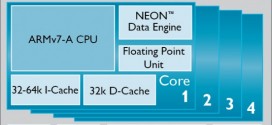Rightware has leaked the upcoming Basemark X benchmark, which is supposed to be a very impressive mobile graphics benchmark tool based on the Unity 4 engine with a 900,000 polygon graphics demo, and they’re saying it should be arriving soon (possibly in a few weeks).
Up until very recently, the only real graphics benchmark we’ve had has been the GLBenchmark, which has recently been updated to version 2.7, and it has finally become cross-platform for iOS, too . For WP8/Windows 8 they have DXBenchmark 2.7, which is using the same graphics demo and tests it seems, but based on DirectX features implemented in WP8 and Windows 8.
Now, we’re about to see at least 2 more serious (possibly even better) cross-platform benchmarks: 3dmark11, and Basemark X from Rightware. Futuremark’s 3dmark11 was supposed to launch a while ago on Android and iOS, but so far it hasn’t. I expect it to come out sometime this year, though. Basemark will probably arrive sooner than that, and should be very impressive, with a graphics demo that loads up 900,000 polygons, which should really put the mobile chips to the test.
Basemark X could very well be the Basemark ES 3.0 benchmark they’ve been working on, and is already available for licensing to companies. As the name implies, it should have support for the next generation OpenGL ES 3.0 graphics API, which many chips will support this year, and virtually all new chips coming to market should support it next year. Here are some more features it has:
- Instanced rendering. Allows rendering multiple instances of single mesh in one draw call. Useful for rendering things like grass and repeating geometry in scenes.
- Multiple simultaenous rendertargets. Rendering can be now done on multiple simultaenous render targets at a time. By rendering single set of geometry with this you can render to separate offscreen buffers things like surface material id, surface normals, surface glossyness etc, which can be used to do deferred shading and other similar effects which previously needed multiple passes on same geometry.
- Render target antialiasing. Now it is possible to do antialiasing when rendering to offscreen buffer.
- Occlusion queries. Allow querying how many pixels were visible out of a set of rendered objects. Generally used for rendering a lens flare or other similar effects.
- 3D Textures. 3D textures can be used for reading. 3D textures make it possible to implement various tricks like shadow volumes etc. Not very useful for mobile applications at the moment.
- Improved shader uniform and varying counts. Shaders can be now more complex and can get more input data from CPU.
- Vertex shader texture read. Now you can read a texture in a vertex shader.
- Primitive restart. Makes it possible to render separate sequences of triangle_strips or triangle_fans or other primitives in two different places in the scene.
If Basemark X is indeed based on Basemark ES 3.0 and OpenGL ES 3.0, then it will be the first benchmark to support this, even ahead of the GLBenchmark and 3dmark11, which is quite an impressive feat.
 TechDomino
TechDomino




